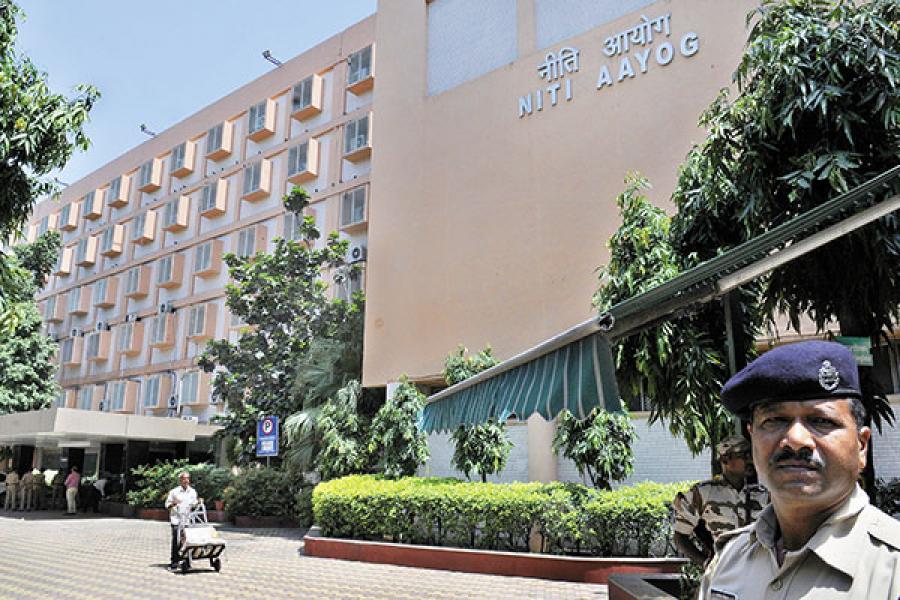
Budget 2016: Making the three Ms work for India - Arun Maira
The PMO's 'muscle', Niti Aayog's 'mind' and the finance ministry's 'money' can help build institutional capacities and resources that can yield desired results

The finance minister’s principal roles are to design fiscal policy and manage the government’s budget. He also has an important role to play in stimulating the growth of the economy. Often this role clashes with the responsibility of fiscal prudence to balance the budget and, so, he must comment on broader economic issues. While performing these core tasks, the finance minister ventures into concerns of national development policies. This makes the annual budget exercise far more interesting for citizens than would a mere account of the government’s finances.
Until the global financial and economic crises in the previous decade, a conservative view of a finance minister’s role was ascendant. Finance ministers in all countries were expected to rein in fiscal deficits and balance the books. India also adopted a time-bound plan to reduce government deficits to reassure financial markets. However, the global economic crisis required all governments to stimulate their economies. Keynesian economics re-emerged. Government deficits became acceptable, even required, to help grow the global economy. Nevertheless, the core responsibility of making sure the government is never broke remains. The tension between these principal roles of the finance minister—of managing the budget conservatively and stimulating growth of the economy—is the substance of ongoing debates filling the pages of business and economic journals, and hours of TV and online discussions. In India too, there are different views, between the chief economic advisor to the government and the vice chairman of the Niti Aayog, about whether the finance minister should adhere to the (already diluted) deficit-reduction plan.
I do not need to venture into this debate. I will describe a pressing need of the Indian economy, which both of them will agree with and then suggest what the finance minister can do about it. The need is to increase the productivity of resources in the Indian economy so that lesser resources are required to produce desired outcomes. With better productivity, the finance minister needs less resources to enable the country’s growth and social objectives and can balance the books more easily.
Consider three critical subjects that the finance minister will have to deal with in the upcoming budget. These are taxation, provisions for building infrastructure and the development of the social sector.
Finance ministers everywhere are pressed to reduce taxes to provide more incentives for investors. When even the very rich, who can afford to pay more taxes, say they want to pay less taxes to stimulate their ‘animal spirits’, the finance minister’s task of balancing the budget becomes doubly difficult. What is surprising is that, even when taxes are not high, investments in infrastructure and manufacturing projects have not been easily forthcoming from foreign and Indian investors.
A root cause analysis reveals the real constraint. It is this: Projects are difficult to implement, money remains stuck and ‘non-performing assets’ increase. Why would an entrepreneur (or bank) risk money when the track record shows that it will be very difficult to generate returns? Taxes are due when profits are made. But when will profits be made, if at all? The time value of money has to be factored in, too. It takes too long to get things going in India compared to other countries. And when things get stuck, as they often do in India, solutions through courts take much too long. So, further investments are prudently held back.
‘Implementation’ is India’s biggest problem. Poor implementation reduces the productivity of money. The improvement of implementation is not an economic problem: It is principally a management problem that results in economic problems. Indeed, the Reserve Bank of India governor, who has been pressed to reduce interest rates to stimulate the economy, has firmly stated that the Reserve Bank must remain focussed on good monetary policy, and should not be expected to solve problems that the government must solve. Similarly, P Chidambaram, finance minister during the UPA government, also said that the finance minister cannot solve problems of implementation that lie within the remit of other ministries and states.
The Reserve Bank and the finance minister should not be expected to reduce interest rates and increase budget deficits to compensate for failures of implementation when they fear that such steps could create further economic problems. Solutions to what are ‘management’ problems must be found elsewhere. They lie in developing capacities of institutions to design and implement processes that will produce desired outcomes effectively.
Turning to the social sector, India is doing very poorly, compared even to its peers in the developing world, on many measures of education and health. The principal problem is not insufficient allocation of financial resources, though some economists and social activists focus on the insufficiency of allocations. The principal problem is that the money allocated and spent does not produce the outcomes desired on the ground. Innumerable evaluations by many Indian and international agencies have documented the poor productivity of resources in India’s social sector schemes. An estimate of approximately 85 percent wastage, first mentioned by former Prime Minister Rajiv Gandhi, seems to be validated by many studies.
No doubt hundreds of millions of people across India are suffering from lack of good education, health, sanitation and other essential facilities they need for decent livelihoods. When the loss is so high, between the overhead tank into which resources are allocated by the finance minister, and outlets on the ground from which people obtain outcomes, it cannot be a good strategy to just keep putting more and more resources into the tank in the hope that more will trickle down to the people. The finance minister has to keep budgets reasonably balanced too. Therefore, delivery institutions in the social sectors must be fixed on a high priority.
In physical infrastructure sectors (urban infrastructure, roads, power, etc) as well as social sectors, a root cause for insufficient progress is poor implementation. Results have to be produced on the ground across the country—in the states, the cities, and in the villages. When state and local governments are not able to deliver effectively, and citizens’ demands for results increase, a natural instinct of the centre is to take charge. It devises solutions, imposes them and monitors implementation. Until it is found that this solution of centralisation is making the problem worse: ‘One size does not fit all’. Local bodies cannot develop their own capacities if they are not expected to manage. Thus, while there can be occasional successes with centralisation, the root problems of poor implementation and insufficient institutional capabilities actually become worse.
Prime Minister Narendra Modi has recognised that the time has come to reverse the over-centralisation of management in India. He has energised the concept of federalism and empowerment of states. Cities are being empowered to manage their own Smart City plans. Modi abolished the central Planning Commission, and replaced it with the Niti Aayog whose charter is to develop capacities for local level planning and implementation, and systems of cooperation between stakeholders.
This strategy is right. The finance minister can use his budget as a significant opportunity to help implement this strategy. It will help him achieve his own objectives of better outcomes for citizens with less strain on the government’s finances. Institutional capabilities—for local management, for inter-agency coordination and stakeholder cooperation, and better regulation—must be improved urgently. These are areas in which institutional capacities in India are falling short of its challenges and aspirations. Capacity building does not require much money. The amount required will be a very small fraction of the investment required to build physical and social infrastructure, whereas the improvements that better capabilities can make to the overall productivity of investments are very huge.
The finance minister’s budget is an occasion for him to strongly signal the need for a national thrust for building institutional capacities for implementation, and to enable this thrust with resources. The PMO can provide the ‘muscle’ for the thrust, as it seems inclined to. The Niti Aayog can provide the ‘mind’ (the architecture and design of processes required), as it has been chartered to, and for which the previous Planning Commission had already left some blueprints in the description of the India Backbone Implementation Network, and processes for developing urban and rural local management capacities. The finance ministry can provide the ‘money’. Their ‘3M’ cooperation in this strategic thrust will put India onto a trajectory of faster, more inclusive, and more sustainable growth.
(This story appears in the 04 March, 2016 issue of Forbes India. To visit our Archives, click here.)
-
 Mehul Shinde
Mehul ShindeGreat article. It makes some very valid points. Effective implementation is the key to success. Government needs to start to rigorous track the benefit realization. Change management is often taken for granted and almost always not given the deserved attention.
on Feb 29, 2016















